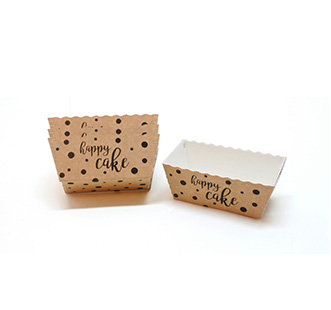
When you unwrap your burger or open up a takeaway noodle box, you may not realize it—but the box you're holding is part of a clever, functional, and carefully designed family of packaging: four-corner and eight-corner paper boxes. They may seem simple, but their design plays a big role in how food is transported, stored, and enjoyed.
In this article, we’ll explore:
What these corner boxes are
Why they are widely used
The differences between them
Materials used
How they are made
Their environmental impact
What makes them special in the food packaging world
These terms describe the structure and folding mechanism of the box.
Four-Corner Box
A four-corner box is typically:
Folded at four key joints (the corners)
Used for shallow trays or clamshells
Common in burger boxes, small cake boxes, snack trays
Advantages:
Easy to fold & unfold
Compact storage
Lightweight
Low-cost production
Eight-Corner Box
An eight-corner box has:
Four bottom corners + four top corners = 8 structural folds
Usually deeper, sturdier, and can support more weight
Found in takeaway containers, chicken boxes, and combo meal boxes
Advantages:
Better support for heavier items
More durable under greasy or hot food
Can hold sauces, rice, or multi-item meals without leaking or deforming
Fast food chains like McDonald’s, KFC, Burger King, and others love these shapes for a few good reasons:
Efficient Stacking – Their flat-folding design makes them easy to ship and store.
Fast Assembly – Machines or humans can pop them open in a flash.
Branding Canvas – Their flat sides are great for printing logos and fun messages.
Heat Insulation – Combined with coated paper, these boxes keep food warm.
Grease Resistance – Paper coating or liners help resist oil from fries or burgers.
Eco-Friendly Options – Many are made from recyclable or compostable material.
Depending on the need (price, food type, environmental concern), these boxes may be made from:
White Cardboard – For clean printing and premium look
Kraft Paper – For natural/eco-style branding
Corrugated Paper – For sturdier, heat-insulating designs
PE/PLA Coated Paper – For waterproof/greaseproof features
Aluminum-Foil Layered (for some high-temperature needs)
These boxes are produced on automatic forming machines that:
Suck pre-cut paper from a stack
Apply glue or heat adhesive
Fold the corners precisely (4 or 8 corners, based on mold)
Press and shape the box
Stack and count them for packaging
Machines like the ZX-700 or ZX-1200 (used in China or Europe) can produce thousands of these boxes every hour.
Many are! Especially when made from:
Recycled Kraft Paper
PLA-coated instead of PE-coated paper
Non-laminated cardboards
Glue made from food-grade, compostable adhesive
Recyclability depends on local policies and coatings used, but many fast-food companies are shifting toward greener materials.
Quick Facts to Remember
|
Feature |
Four-Corner Box |
Eight-Corner Box |
|
Shape |
Shallow Tray |
Deep Clamshell |
|
Assembly |
Easier/Faster |
Slightly Complex |
|
Typical Use |
Burgers, Snacks |
Fried Chicken, Combos |
|
Sturdiness |
Moderate |
High |
|
Cost |
Low |
Moderate |
|
Custom Print Area |
Medium |
Large |
In Conclusion
Four-corner and eight-corner boxes may seem basic, but they’re a masterclass in smart packaging design. Balancing durability, simplicity, and branding, they’re everywhere in our daily food life—and they’ll continue to be the go-to option for fast food businesses worldwide.
GET A QUOTE
+86-13780131993